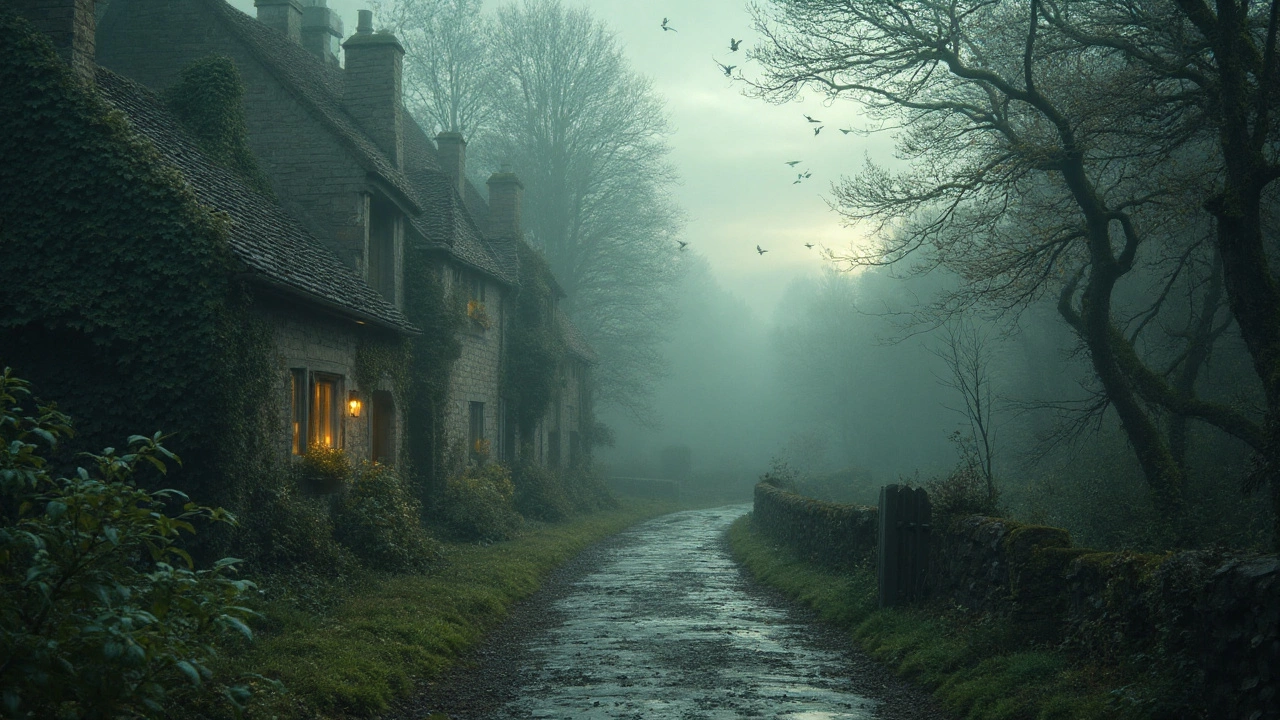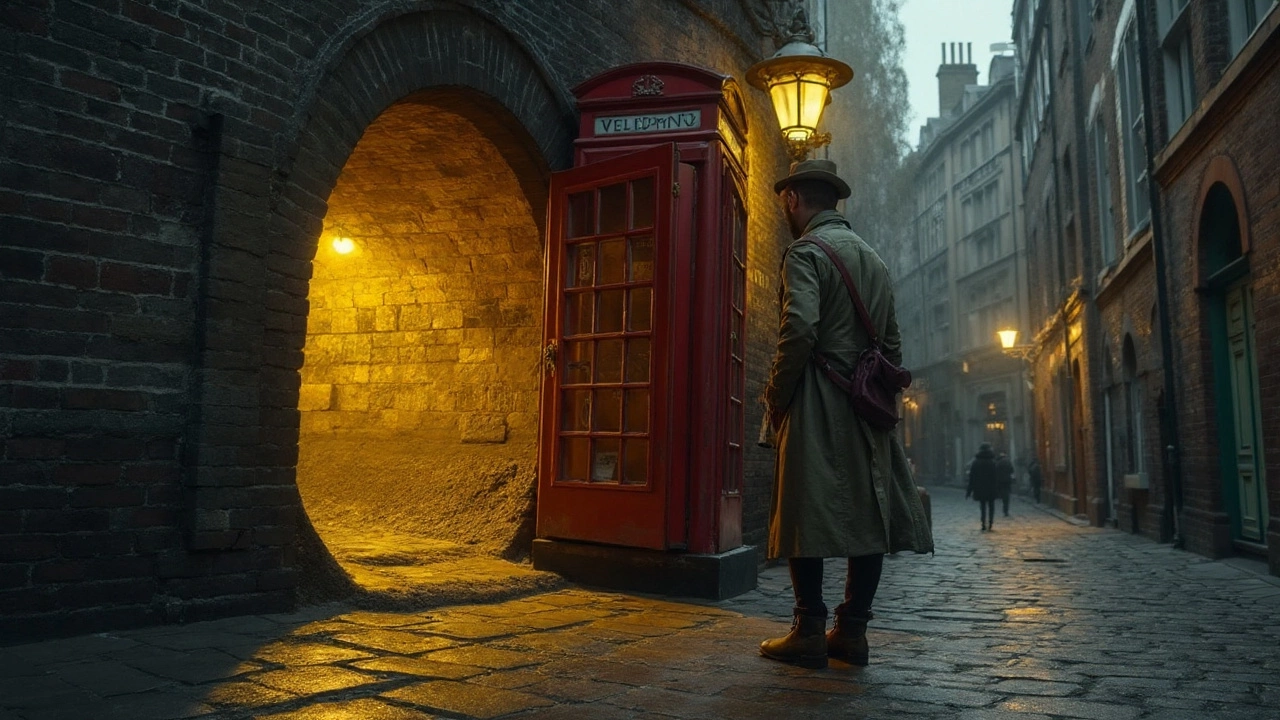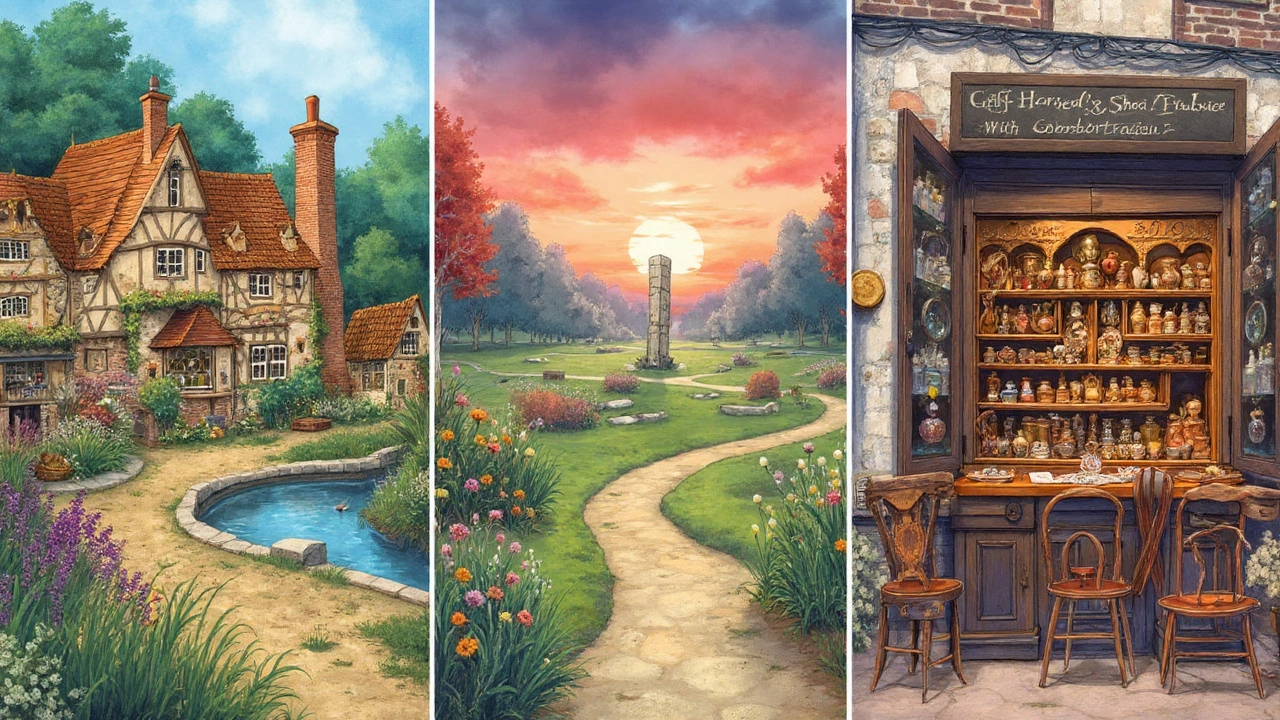Discover the Most Secret Place in the UK: Hidden Destinations, Secrets & Stories
 Aug, 7 2025
Aug, 7 2025
Some places don't shout to be seen—they whisper. And the most secret place in the UK isn't exactly marked on any tourist map. Think of the kind of place that doesn't have lines of buses outside or families crowding souvenir shops. This isn't about the Tower of London or Stonehenge. You want somewhere that stays stubbornly untouched, even as travellers pour into the country each year.
The Allure of Secrecy: What Makes a Place Truly Hidden?
Not every hidden spot is found stashed away on windswept cliffs or shadowy forests. Some hide in plain sight. But true secrecy in the UK usually means something older than your average country lane. We're talking about spots where even the locals might hesitate before they give you directions. When you hear “the most secret place in the UK,” don't think of a locked vault with a crown jewel inside. No, think older, quieter, more mysterious—a place where history peeks up between the weeds and even the wind seems to pause out of respect.
One place people talk about—mostly in knowing hushes—is the ancient Wiltshire bunker called Burlington. Here’s the wild part: it's not exactly a stone circle or a haunted cottage. Buried under the Cotswolds, this abandoned Cold War city was built to hide the entire British government if nuclear war kicked off. For decades, barely anyone outside the top brass even knew it existed. The place has 60 miles of underground roadways, rooms for six hundred people, and even a BBC broadcasting studio, all hidden beneath a patch of fields that look like pure English countryside.
But what pulls people to hidden places like these? It's more than just curiosity. A secret spot feels exclusive. You don't accidentally end up in Burlington—you have to know the story, and that’s half the thrill. It's about sharing a wink with history, glimpsing a piece of the world that's stayed silent and untouched even while everything else got louder and busier. The less you see on Instagram, the more you want to go. Secret places turn you into an explorer, not just another tourist following a guidebook.
The UK has always had a knack for secrets. There are villages without maps that once hosted witches' trials, beaches where World War II tanks rust away unnoticed, and forests that hold more than just squirrels—try mysterious stones with ancient carvings, and the hush of ghost stories whispered about by night hikers. The idea of secrecy sits deep in the island’s folklore. It’s not just about keeping things hidden for fun—it’s born out of hundreds of years of actual danger and powerful kings and queens who liked a good hiding place.
And here’s the kicker: finding one secret spot almost always leads to chasing another. Start with a cold bunker in Wiltshire, and pretty soon you're hunting through pines in Scotland for abandoned spy outposts, or seeking out crumbling tunnels hidden beneath London’s busiest streets. There’s always another secret. That’s what really makes these places special: they’re alive with potential, and with stories that most people have never heard.

Burlington Bunker: The UK's Hidden Underground City
Let’s dig deeper into Burlington, since you won’t find a more cryptic address in the country. Officially called Site 3, Burlington was dug out beneath Corsham, Wiltshire, in the 1950s. The idea was pure Cold War paranoia—Prime Minister Harold Macmillan picked the spot so the entire government could vanish underground if Moscow pressed the Big Red Button. And it wasn’t just a hole in the ground with beds. Burlington had everything — from slick telephone exchanges and medical rooms to a luxury suite built just for the Prime Minister. It even boasted its own reservoir for fresh spring water, a food supply that could last months, and massive generators, just in case the world’s power grids went dark.
But here’s the part that really spins your mind: thousands of people worked day in, day out, for decades, often not realizing the scale of what they were a part of. Some of the tunnels connecting the different sections are so long that workers rode on little trams or bicycles just to get around. If World War III had started, the plan was for the entire British government (plus a smattering of top scientists and staff) to be whisked away overnight and live out the apocalypse surrounded by nothing but limestone and humming air vents.
Despite this, the vast majority of UK residents had no idea what was beneath their very feet. Even now, many locals in Wiltshire only know vague stories about military traffic and mysterious police patrols. The site remained Britain’s best-kept secret for over 30 years before it was declassified in the early 2000s. Today, Burlington stands in eerie silence. The doors are locked, the lights are usually off, and only the faintest echoes of its Cold War secrets linger.
That’s not to say you can walk up and explore it. True to its secretive spirit, Burlington isn’t open to the public—no tours, no exhibitions, not even occasional access for TV documentaries. The only way to catch a glimpse is through sneaky photos online, urban explorer blogs, or by listening to the stories of ex-workers who sometimes (carefully) break their silence. If you’re ever around Corsham, take a look at the unassuming countryside and try to imagine the hidden city below your feet, loaded with abandoned rooms, yellowed paperwork, and telephones that haven’t rung in decades.
This is what makes Burlington the secret places UK fans daydream about: not just because it’s hidden, but because it’s so complete. There are other military bunkers in the UK, but none feel as grand, mysterious, and completely out-of-bounds. Burlington’s story is so tightly woven into the folklore of secrecy that even seasoned adventure seekers feel a jolt just thinking about it. The sheer audacity of building an entire safe haven underground and keeping it silent for half a century is impressive and more than a little chilling.
A quick tip: If you’re in the Wiltshire area, you won’t get inside Burlington, but you can explore the beautiful countryside above. There are a few walking paths and old railway cuttings (be careful, don’t trespass). Ask at the local pub, and if you catch someone in a good mood, you might hear a little “off the record” chat about the days when lorries full of supplies were seen vanishing into the hills, or about strange goings-on in the dead of night.

Hunting the UK's Hidden Gems: Where to Find Real Secrets
Burlington might win the trophy for the most secret, but the UK has more than one trick up its sleeve when it comes to hidden gems. The country’s patchwork of landscapes means secrets can hide almost anywhere—between the folds of Welsh mountains, down a Cornish smuggler’s cove, or among the wild, empty lochs of Scotland.
If bunkers aren’t your thing, try this: the “Lost Village” of Imber on Salisbury Plain. Once a sleepy place, the whole village was abruptly evacuated in World War II and handed to the army for training. Imber still sits empty—stone cottages stand waiting, the old church opens just a handful of days each year, and the air feels heavy with stories, like an abandoned movie set that’s waiting for its cast. You can usually visit by booking ahead or timing your trip with one of the rare open days (usually around Easter or Christmas). Check local military updates before planning, though—they’re serious about safety on working army land.
Or maybe you’re drawn to natural wonders. Have you ever heard of Fingal’s Cave? On Scotland’s Isle of Staffa, this cathedral-like sea cave is carved completely from hexagonal basalt columns. Victorian-era poets and composers raved about it, but you probably won’t see busloads of tourists clambering across the choppy waves to get there. Boat tours run only when the weather behaves, and when you finally step inside, the echoing drip and strange, almost alien shapes feel like something out of time.
For those who fancy a touch of magic, there’s the “Puck’s Glen” near Dunoon—a mossy, fairytale ravine that’s all twisted roots, whispering waterfalls, and cool green light. Folklore says the Glen is haunted by mischievous spirits, and it’s so easy to see why when you’re deep inside, surrounded by the hush of dripping leaves and towering pines. You can hike through in a couple of hours, but few people stray from the well-trodden path, so take a flashlight if you’re tempted to explore deeper.
Sometimes, secrets are hiding in the city. In London, slip off the noisy main roads and you’ll find hidden gardens, Victorian-era tunnels, and even mysterious “ghost stations” on the Underground. Aldwych Station is a favourite among history buffs—shuttered since 1994, it’s used for film shoots and, very occasionally, limited-time tours that vanish almost as quickly as they’re announced. If you catch one, book it in a blink.
Want some tips for tracking down secret spots? Try chatting up locals wherever you go. Forget big-name guidebooks; a quick drink at a quiet pub or a conversation with a shop owner can score you real insider info. Use old Ordnance Survey maps—they often mark things modern navigation apps ignore: deserted railways, forgotten chapels, and hollow-ways leading nowhere but down the rabbit hole. And sometimes, the best tip: go where there’s no phone signal. The fewer Google reviews, the better your chances of stumbling on something truly unique.
The best secret places blend a little history, a dash of legend, and practical inaccessibility. Whether it's the desolate corridors of Burlington, a crumbling coastline cave, or a village lost in the folds of MOD land, these stories remind us that adventure doesn’t always need a plane ticket or an expensive tour. Sometimes, all it takes is curiosity, a sense of timing, and just a sprinkle of stubbornness.
